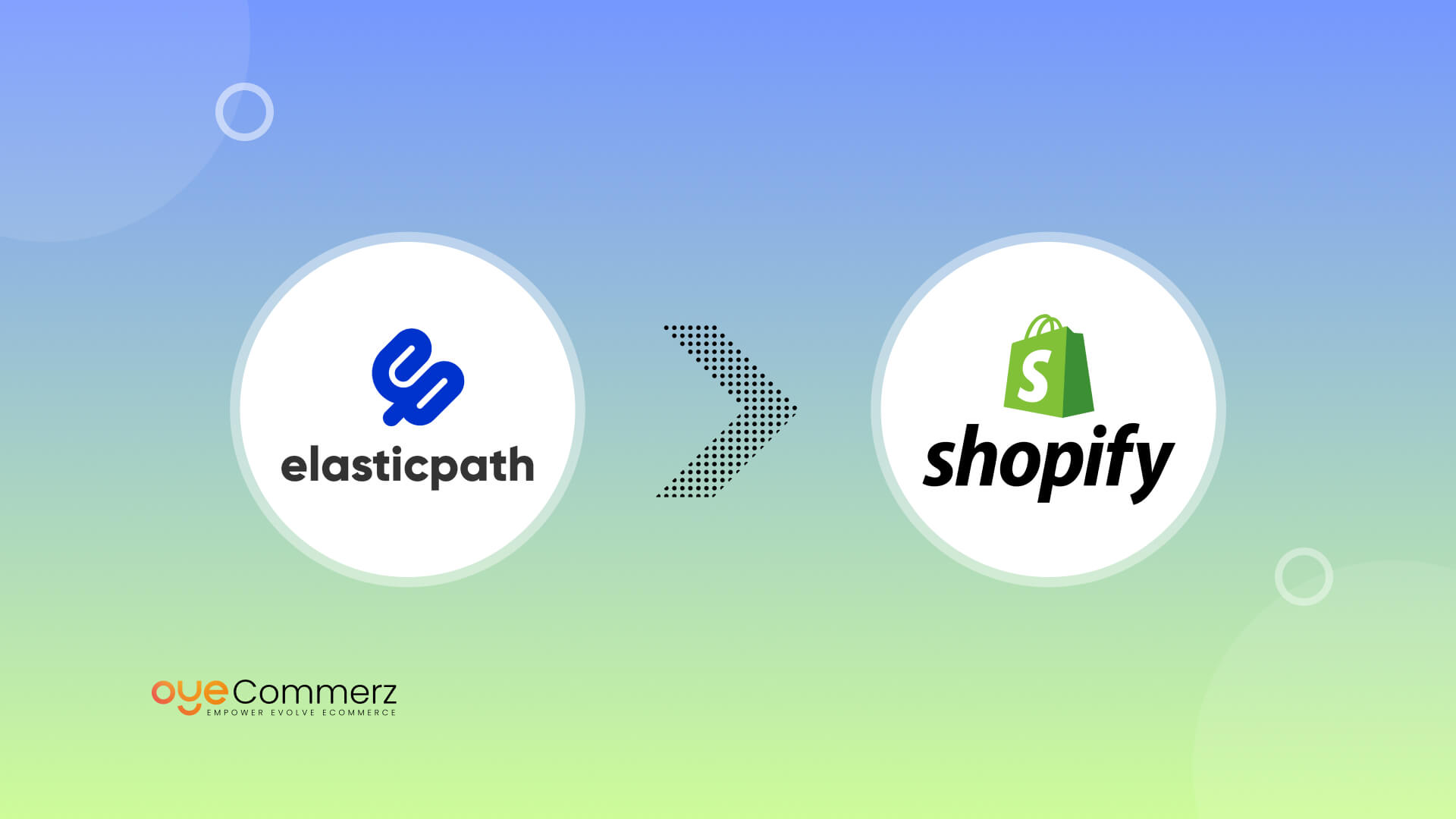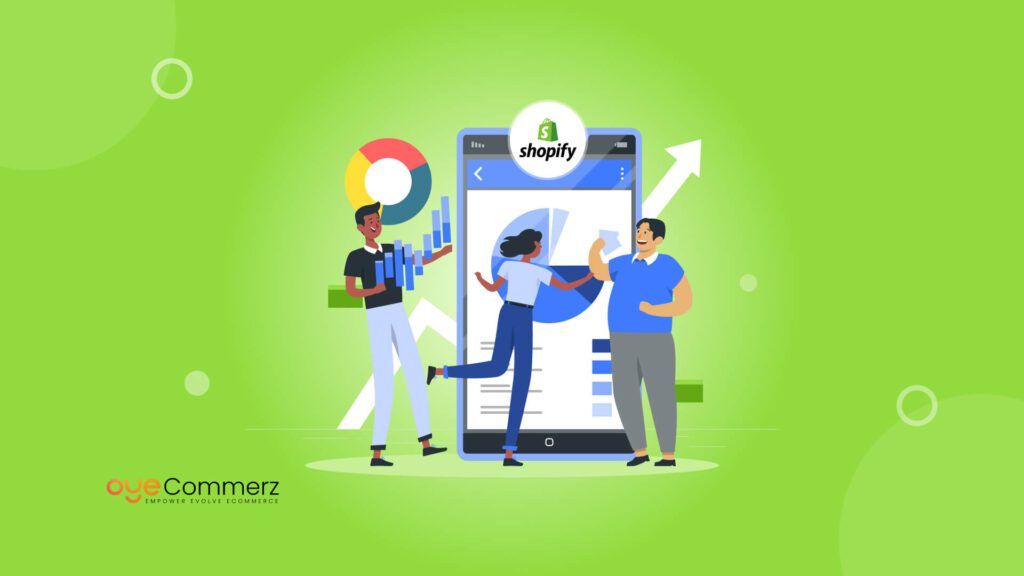Migration of an e-commerce platform is a big decision that can either make or break your company’s future. Whether you need it as scalability, flexibility, or even better performance shift from Elastic Path to Shopify, a smooth transition is in store. There are points to ponder and things to know, but much potential lies ahead. It helps break down why and how this can be a seamless migration addressing all the concerns that come along with platform shifts and proving to the world why Shopify is just what you need for your growing eCommerce business.
Table of Contents
ToggleElastic Path and Shopify: A Brief Overview
Elastic Path and Shopify cater to eCommerce businesses but with largely different approaches in the design of the platform and its functionality. Elastic Path is a commerce solution focused on enabling fully customized, highly individualized digital commerce experiences. It gives enterprises flexibility over creating complex, unique, and fully tailored solutions by decoupling front-end experience from back-end services. However, it requires heavy involvement by developers and complex infrastructure management.
On the flip side, Shopify is an all-in-commerce fully hosted platform. Shopify is known to be easy, fast to deploy, and simple, hence opening up space for business more so on growth rather than technical problems. It also supports very high customizations, but this comes without the technical hegemony usually associated with Elastic Path-type platforms. This is why most businesses find it practical to migrate from Elastic Path to Shopify, especially when scalability, ease of use, and speed to market are very critical.
Why Migrate from Elastic Path to Shopify?
Elastic Path is apt for large-scale enterprises that wish to gain control over their eCommerce systems through open architecture and extensive API capabilities. However, it presents a whole list of challenges that might very well remain a stumbling block to profitable growth and development in the long run. Here are some of the key reasons why enterprises may be considering a leap to Shopify:
Complexity in Management
While quite flexible, Elastic Path has its complexity. This also means, that from infrastructure management to security updates, the in-house IT team has much to do. Shopify is a completely managed solution for its technical complexities, freeing people’s mind space to think about business strategy rather than maintaining back-end enhancement.
Cost of Ownership
An Elastic Path store can be expensive, mostly when hosting, developing, maintaining, and updating factors come into play. Shopify’s subscription model offers flat costs and prevents the need to have expensive on-premises IT infrastructures or in-house experts.
Scalability
In Elastic Path, scaling can be done but has to be maintained with great care at an infrastructural and resource level. Shopify does have a designed infrastructure that is built for high-traffic volumes. Thus, bandwidth, server space, or performance issues become irrelevant for the users.
Time to Market
Shopify’s out-of-the-box solutions allow businesses to launch way faster than through Elastic Path. In case you need to hit the market fast for your growth strategy, then Shopify has a clear edge.
Extensive App Ecosystem
Shopify has an enormous marketplace of apps where all needed integrations with plug-and-play functionality and solutions of payment gateways, marketing tools, shipping logistics, and more exist. This requires less customization in terms of development as is typically required in Elastic Path.
Key Benefits of Shopify for Growing eCommerce Businesses
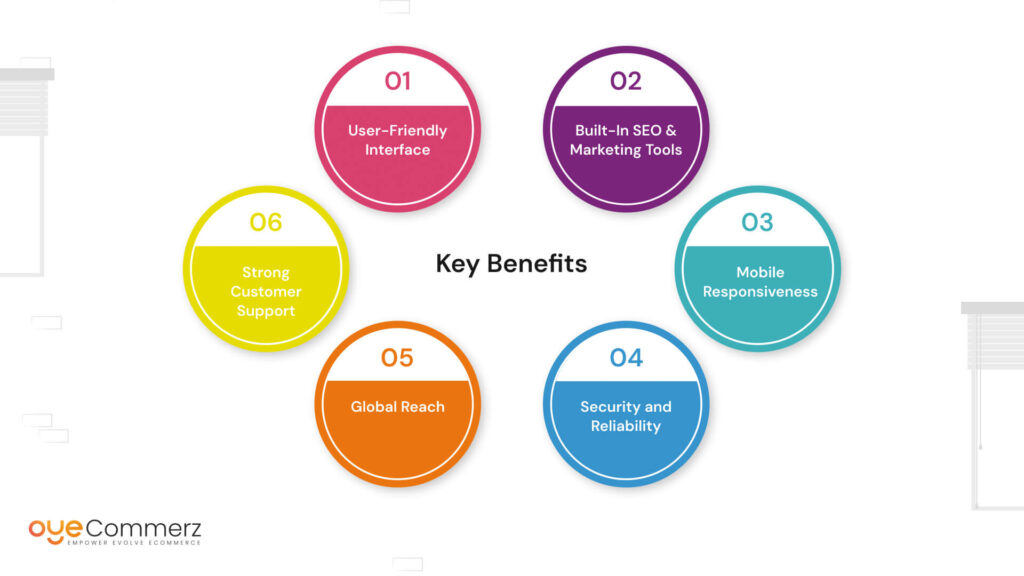
Migration to Shopify carries numerous benefits, hence the platform makes Shopify ideal for businesses that scale. Here are the primary benefits of Shopify:
User-Friendly Interface
The interface of Shopify is poised to be simple to use even for non-technical. Whether it be managing products, processing orders, or looking at analytics, Shopify’s dashboard is clear and easy to get on with.
Built-In SEO and Marketing Tools
It has inbuilt SEO tools and is pretty compatible with Google Analytics, Facebook, Instagram, and other marketing tools, which will help you streamline your digital marketing work and also increase visibility.
Mobile Responsiveness
As mobile commerce becomes significant today, Shopify ensures that your store is fully mobile-optimized. Its themes are mobile responsive. Moreover, mobile apps will enable you to manage your store on the go.
Security and Reliability
Shopify is PCI DSS compliant and takes care of security updates, backups, and infrastructure management. This gives peace of mind knowing that your store is always secure and running at the best possible levels of performance.
Global Reach
Shopify has support for multilingualism, multicurrency, and international shipping integrations, which can be helpful if a business is moving its operations to other parts of the world. Elastic Path does support internationalization, but the multi-language capabilities, multicurrency options, and international shipping integrations all factor very neatly into Shopify.
Strong Customer Support
Shopify has 24/7 customer support, ensuring that you can get all your issues resolved quickly. Elastic Path does offer support, but Shopify’s rich documentation along with its community-driven support makes troubleshooting so much faster and easier.
Challenges of Elastic Path and How Shopify Solves Them
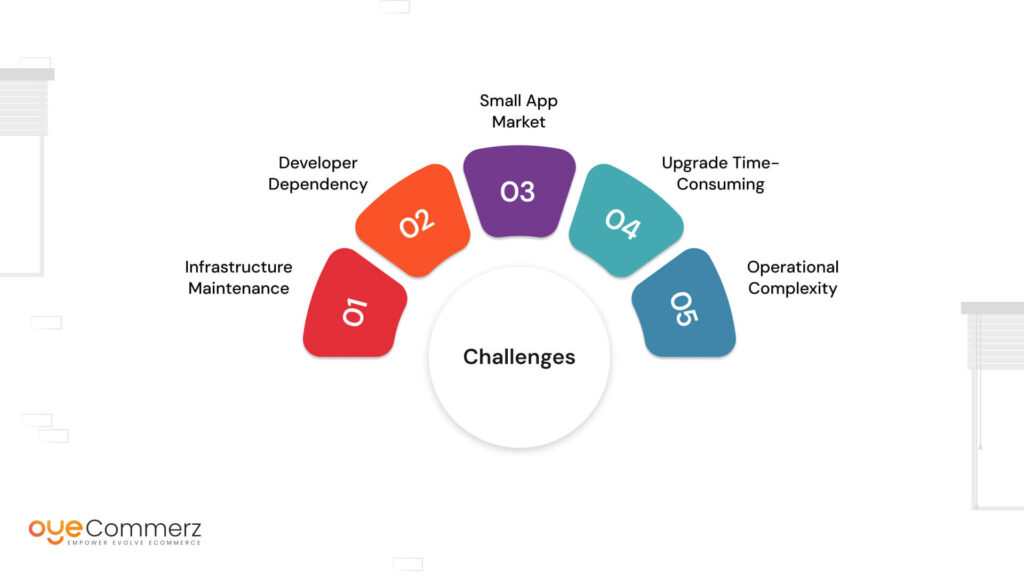
Where the flexibility of Elastic Path excites many a business, some of the challenges associated with it are elegantly offset by Shopify:
Infrastructure Maintenance
It is very overwhelming for companies not with large IT departments since they have to handle managing their hosting, security patches, and performance optimizations. Shopify is a fully managed platform where the company takes care of all the backend tasks so you are only concentrating on running your business.
Developer Dependency
With Elastic Path, most changes to your storefront usually require developers to make. Shopify offers many built-in customization options that do not require serious coding expertise and, when development is necessary, tend to be easier and less expensive.
Small App Market
Elastic Path is API-driven and, therefore, most of the features have to be specifically developed. Shopify has the industry’s largest app store, which provides thousands of applications that can give new functionalities without having to make an effort to develop something custom.
Upgrade Time-Consuming
Upgrades may take a lot of time effort and resources for an Elastic Path store, whereas Shopify takes care of updating its platform, and your store is always using the latest versions with the best feature sets and security improvements.
Operational Complexity
This will add operational complexity to everyday processes as Elastic Path offers a multi-vendor marketplace and customizability.
Shopify, on the other hand, is lean and mean. They have an interface that simplifies the management of orders, product listings, and even interactions with customers.
Step-by-Step Guide to Migrating Your Store to Shopify
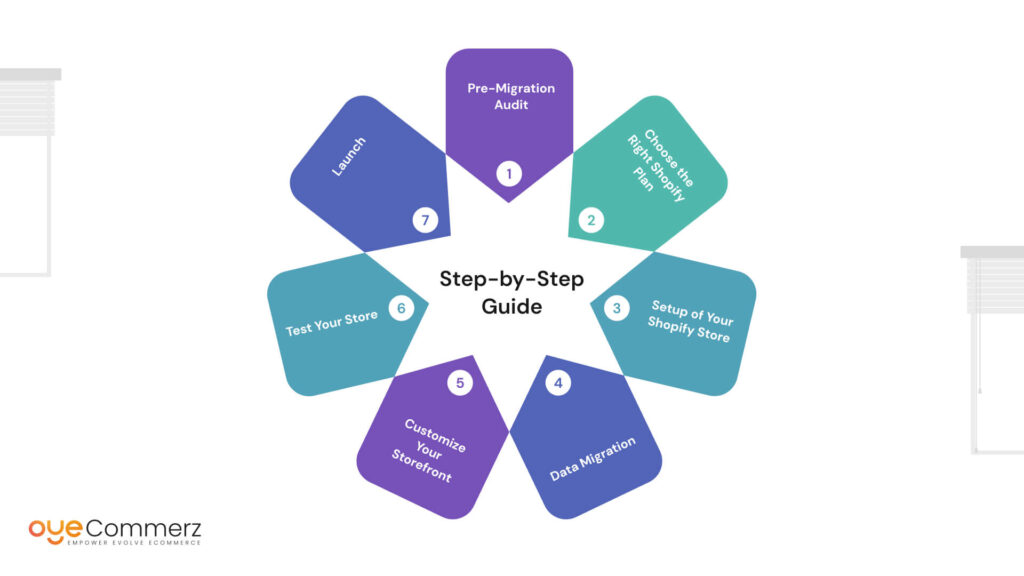
Elastic Path to Shopify: Find Your Way with These Steps Below
It is truly impossible to migrate a Shopify store without proper planning and execution. This guide shall outline the best way to make this process seamless:
Pre-Migration Audit
Before migrating, do a comprehensive audit of your existing Elastic Path store. Gather all the documentation of your current product catalog, customer data, orders, and any custom functionalities that you would like to bring along to Shopify. This will help determine what should be migrated and what can be optimized on Shopify.
Choose the Right Shopify Plan
Shopify offers several plans with varied features. Compare your business and the estimated growth to decide which is most suitable for you and aligns with your objectives.
Setup of Your Shopify Store
Once you decide on your plan, you should set up your Shopify store by going through theme editing, adding branding such as logo, and basic configurations like tax policy, shipping options, and payment methods.
Data Migration
Migrate your product data, customer information, order history, and other relevant data from Elastic Path to Shopify. Many third-party migration tools are available, or you can work with a Shopify migration expert to get everything perfectly done.
Customize Your Storefront
Once you’ve migrated all your data, design your Shopify storefront to reflect the identity of your brand. Shopify has an intuitive drag-and-drop builder and customizable themes that make it easy to create a professional-looking store where you will engage your audience without needing to know a thing about coding.
Test Your Store
Test your Shopify store before launching. Ensure that it loads product pages correctly, customer information is correct, and other third-party applications you have added are also working as you expect them to be.
Launch
Once everything is set, launch your Shopify store. Inform your customers of this migration and update all the marketing channels and e-mails with new store details.
Common Mistakes to Avoid During Migration
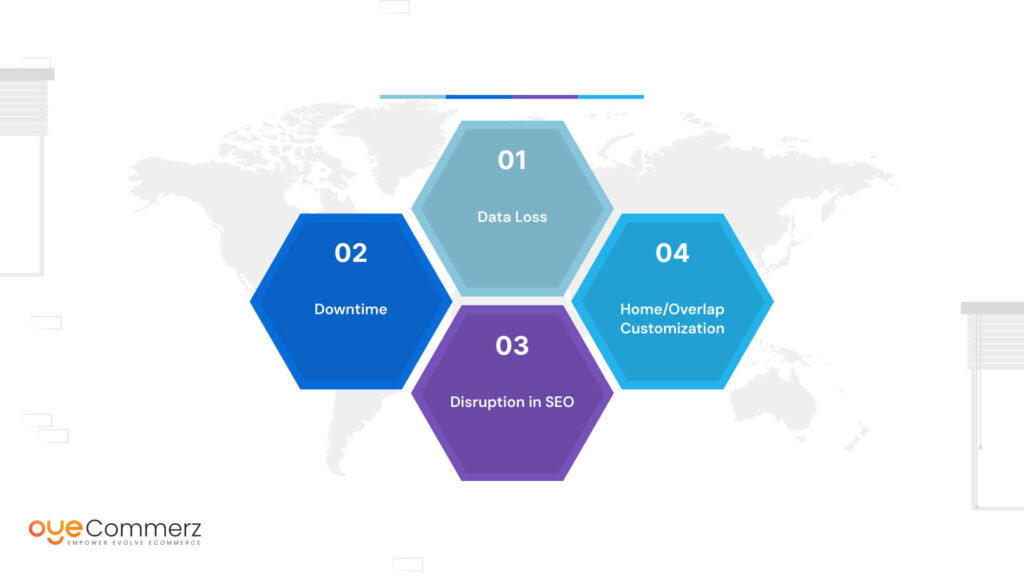
While migrating from Elastic Path to Shopify can bring much change, here are common pitfalls to watch out for:
Data Loss
Poor management of such a migration can cause some of the data to be lost, including product listings, customer records, and order histories. Use migration tools and test data transfers to avoid that.
Downtime
You plan your migration timeline properly so that the process does not result in any unnecessary downtime for your store, and you can keep both sites running for a short period while migrating.
Disruption in SEO
Ranking in SERP might be affected after migrating the business to a new platform unless it is well managed. Ensure old URLs are also redirected using 301. All meta tags, descriptions, and other elements related to SEO must be configured correctly in Shopify.
Home/Overlap Customization
Resist the urge to over-optimize your Shopify store right out of the gate; introduce core features and add customizations gradually as you grow, so you don’t overwhelm your team with too much change at once.
Make the Switch from Elastic Path to Shopify with OyeCommerz!
At OyeCommerz, we specialize in seamless migrations that ensure your business transitions smoothly without losing valuable data or disrupting operations. Our expert team handles everything—from auditing your current platform to setting up your Shopify store and optimizing it for performance. With a focus on efficiency, speed, and precision, we’ll help you unlock Shopify’s full potential so you can focus on scaling your business. Let OyeCommerz be your trusted partner for a hassle-free migration.
Contact us now for a free consultation and start your migration journey with confidence!
Contact to Migrate your Site to Shopify Now
Conclusion
A shift from a custom platform to Shopify is a step toward the standardization of your e-commerce business and future growth. Yes, it is a challenging process that involves data migration, SEO preservation, and continuity of the design integrity, but that is exactly what strategically designed planning helps you cross. Focusing on optimization post-migration and continuous improvements in your solution ensures that this platform by Shopify is unleashed in all its glory for better customer experience in the long run.

